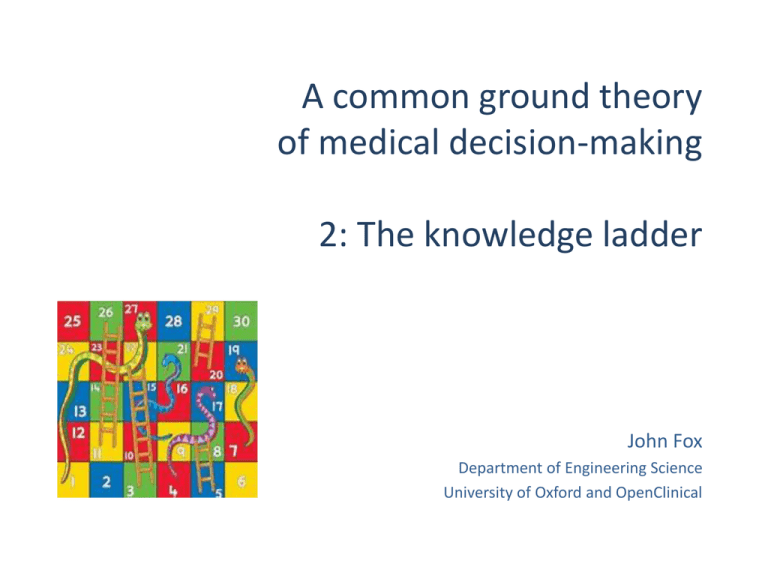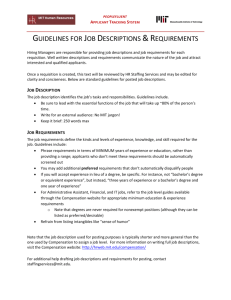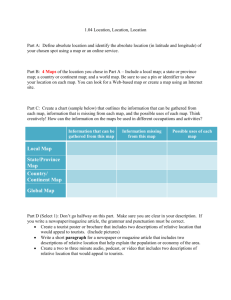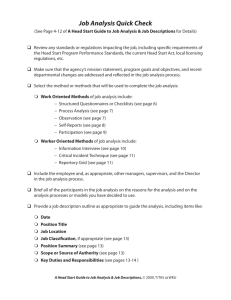john_fox_stacks_and_ladders_a_common
advertisement

A common ground theory of medical decision-making 2: The knowledge ladder John Fox Department of Engineering Science University of Oxford and OpenClinical Knowledge based systems and theories of knowledge • Expert systems – “a piece of software which uses databases of expert knowledge to offer advice or make decisions in such areas as medical diagnosis” • Knowledge based systems – “A KBS is a computer program that reasons and uses knowledge to solve complex problems” • Knowledge representation – “use of symbols … in a conceptual model of the world; symbols are arranged in order to form semantic constructions and express relations between concepts” Knowledge engineering • Representation and formalisation of knowledge – Domain specific and general knowledge – Theory and semantics of concepts and ontologies • Knowledge acquisition – Elicitation of knowledge from human experts – Semi-automatic methods (e.g. machine learning) • Symbolic processing techniques – Computational architectures for knowledge processing – Practical tools for creating and maintaining knowledge bases PROforma: A knowledge representation language for decision engineering • A general notation for modelling clinical processes • Grounded in a logical theory of decisions, plans and knowledge • Applications are composed out of a minimal set of generalised task models Fox et al, Proc. MIE 1996; Fox and Das, MIT Press, 2000 Sutton and Fox JAMIA, 2003 An analogy from music OpenClinical.net: a repertoire of medical compositions Formalising and sharing knowledge Source content Trials, systematic reviews, guidelines, evidence Point of care e.g. Routine care, clinical research, patient services Machine executable models of practice PROforma+ Open access, open source repository Repertoire The CREDO stack The medical knowledge ladder Agents Plans Decisions Rules Descriptions Concepts Terms WHO International classification of diseases Primary healthcare Information Support Other healthcare related classifications Terms 3-character core Speciality codes • Diagnoses • Symptoms • Abnormal Lab findings • Injuries and poisonings • External causes of morbidity and mortality • Factors influencing health status • oncology • dentistry • dermatology • psychology • neurology • obstetrics & gynaecology • rheumatology & orthopaedics • general medical practice International Nomenclature of Diseases SNOMED Systematized NOmenclature of MEDicine • A general purpose, comprehensive medical terminology • Computer-readable standard • Representing and indexing “virtually all of the events found in the medical record” • SNOMED CT (Clinical Terms) is being widely promoted as a global language (English) Concepts • Formalisms for organising and formalising the meaning of concepts in a domain • Domain concepts linked together in a network using relations characteristic of the domain • Class hierarchies – Inheritance of attributes over classes Concepts Terms Ontologies and descriptions • Capture common understanding of the meaning of information – Between people, computers, both • Enable sound techniques for reasoning, decision-making, planning, learning … by computers • Introduce standards across medical specialties • Enable trustworthy use and reuse of domain knowledge Ontologies and descriptions (compare semantic networks, dependency graphs, BNs) Patient1 Patient2 Symptoms IS_A Lump causes instance instance IS_A Chemotherapy IS_A Radiotherapy Weight loss IS_A Descriptions Breast cancer Treatments caused_by Concepts Terms IS_A Cancer Rule-based decision support Rules Descriptions Concepts Terms if last_creatinine is not present then alert_text := "No recent creatinine available. Consider ordering creatinine before giving IV contrast."; conclude true; elseif last_creatinine > 1.5 then alert_text := ”This patient has an elevated creatinine. Giving IV contrast may worsen renal function." ; conclude true; else conclude false; endif; Reasoning over ontologies if Subclass is a kind of Class and Property is a property of Class then Property is a property of SubClass If Disease is a cause of Symptom and Patient has Symptom then possible diagnosis of Symptom in Patient is Disease Description logics • Descriptions of medical facts and clinical data stated in propositional sentences in some L • First order predicate calculus is a commonly used and versatile/powerful tool for reasoning over ontologies and descriptions • Known to be computationally intractable in worst case – do not need all the power of FOPC; – adopt simpler axioms with more favourable computational properties – http://en.wikipedia.org/wiki/Description_Logics PROforma “task” ontology Terms to descriptions Descriptions Concepts Terms Rules in PROforma Rules Descriptions Concepts Terms PROforma decision engineering Decisions Rules Descriptions Concepts Terms PROforma decision model Decisions Rules Descriptions Concepts Terms Decisions in context: workflows, care plans and pathways Plans Decisions Rules Descriptions Concepts Terms Kinds of decision-making and expertise Agents Plans Decisions Rules Descriptions Concepts Terms https://en.wikipedia.org/wiki/Expert_system Conclusions • Understanding medical expertise requires general models for reasoning, decision-making, planning etc (of course) • … but a key (the largest?) component of medical expertise is what the expert knows • AI and knowledge representation research have shown that knowledge is semantically complex but systematically structured • Theories of knowledge and techniques of knowledge engineering open up exciting possibilities for formalising and sharing medical expertise and exploring new techniques for improving decision-making and the quality and safety of common medical practice Conversations are two way… • OpenClinical.net is based on a kind of publishing model (compare Wikipedia) • Question to behavioural scientists - how can we engage the stakeholders to use it? – Professionals – Patients – Providers • “The problem is in the implementation” … incentives, bonuses, payoffs, …?






